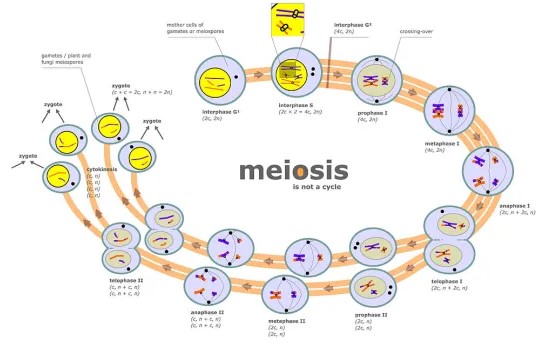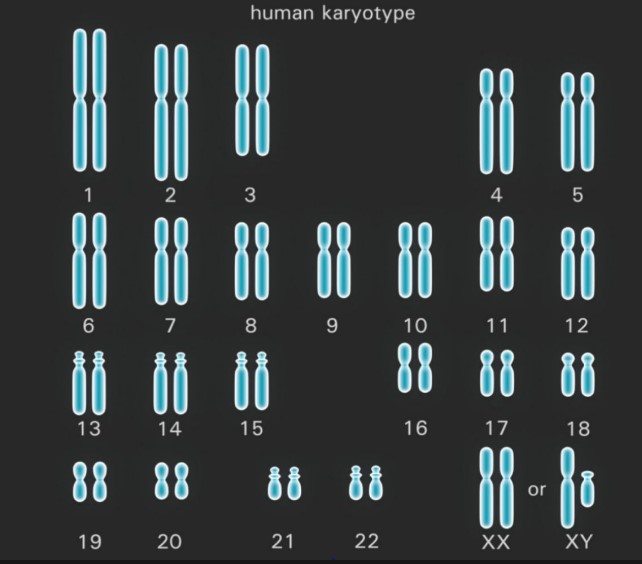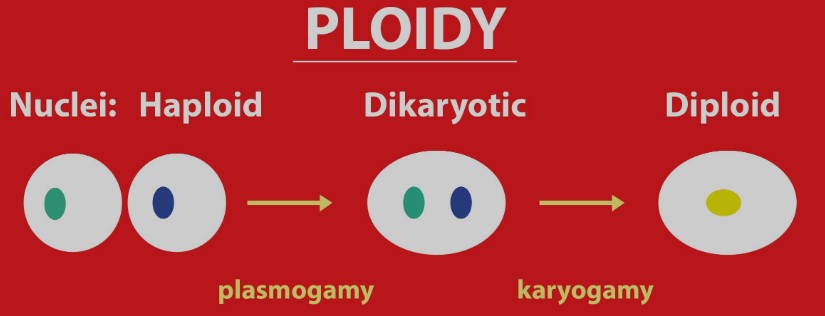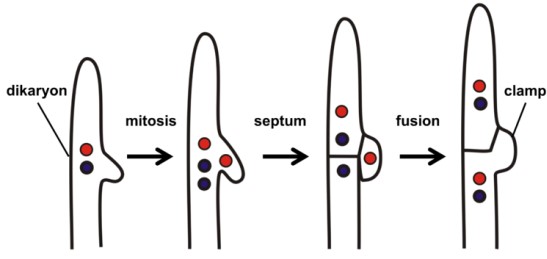The intricacies of cellular biology offer a fascinating window into the complexity of life. Among the myriad of concepts essential for understanding biological diversity and organism development, two terms often emerge as focal points of study: dikaryotic and diploid. These concepts are not only foundational to genetics and cellular biology but also pivotal in distinguishing the reproductive and growth processes of various organisms.
Dikaryotic cells are characterized by containing two separate nuclei within a single cell, a condition primarily found in certain fungi and algae. In contrast, diploid cells house a single nucleus with two sets of chromosomes, a common condition in higher organisms, including humans, where it plays a crucial role in sexual reproduction and genetic diversity. This distinction lays the groundwork for understanding the complex lifecycle of many organisms, from fungi to flowering plants and animals.
Expanding our knowledge on these cellular states uncovers the mechanisms behind genetic inheritance, organism growth, and the evolutionary adaptations that have enabled life to thrive in diverse environments. The difference between dikaryotic and diploid cells is not merely a matter of academic interest but a cornerstone in the study of life sciences, illuminating the paths through which life diversifies and adapts across the globe.

Cell Basics
Types of Cells
Overview of Prokaryotic and Eukaryotic Cells
The world of living organisms is divided into two broad categories based on the cellular structure: prokaryotic and eukaryotic cells. Prokaryotic cells are simpler, smaller, and lack a nucleus. Bacteria and archaea are made up of prokaryotic cells. They have DNA, but it floats freely in the cell’s cytoplasm instead of being enclosed within a nuclear membrane.
Eukaryotic cells, on the other hand, are more complex and larger. They have a well-defined nucleus where the DNA is stored, surrounded by a nuclear membrane. This category includes almost all other forms of life, from fungi and plants to animals and humans. For the purpose of understanding the difference between dikaryotic and diploid cells, we’ll focus on eukaryotic cells as they are relevant to this topic.
Chromosome Basics
Explanation of Chromosomes, Genes, and Their Role
Chromosomes are long strands of DNA wound around proteins called histones. They carry genes, the basic units of heredity, which dictate everything from the color of our eyes to our susceptibility to certain diseases. In eukaryotic cells, chromosomes are housed within the nucleus, serving as the blueprint for the organism’s development and function.
Every species has a characteristic number of chromosomes. For example, humans have 46 chromosomes in each cell, arranged in 23 pairs. The role of chromosomes in cellular function and reproduction is critical. They ensure that DNA is accurately copied and distributed in the process of cell division, which is essential for growth, repair, and reproduction of the organism.
Diploid Explained
Definition
Diploid cells are those that contain two complete sets of chromosomes, one from each parent. This is denoted as 2n, where n represents the number of chromosome types in the organism. For humans, the diploid number is 46 (2n=46), meaning there are 23 pairs of chromosomes in each diploid cell.
Formation
Diploid cells form through mitosis, a type of cell division that results in two daughter cells each having the same number and type of chromosomes as the parent nucleus. The process involves several steps:
- Replication of DNA, so each chromosome consists of two identical sister chromatids.
- Alignment of chromosomes at the cell’s equator.
- Separation of sister chromatids to opposite poles of the cell.
- Division of the cytoplasm, forming two separate cells.
Mitosis is fundamental for organism growth, tissue repair, and in some cases, reproduction.
Role and Examples
Diploid cells play a crucial role in organisms. They make up the body’s somatic (non-reproductive) cells. For instance, in plants, diploid cells are found in the stems, roots, and leaves. In animals, they constitute muscles, skin, and brain cells, among others.
Dikaryotic Unveiled
Definition
Dikaryotic cells are defined by having two nuclei per cell, each from a different parent. This condition is especially prevalent in fungi during a specific stage of their life cycle, known as the dikaryotic phase. It’s a unique form of cellular arrangement that allows for genetic diversity without immediate fusion of the cells’ genetic material.
Formation
Dikaryotic cells typically form through a process involving fungal mating:
- Two haploid fungal cells (each with a single nucleus) fuse their cytoplasm through a process called plasmogamy.
- However, their nuclei do not immediately fuse. Instead, they coexist within the same cell, forming a dikaryotic cell.
- This state can last for varying lengths of time, depending on the species, before eventually leading to nuclear fusion (karyogamy).
Role and Examples
The dikaryotic phase is significant in the lifecycle of fungi, facilitating genetic recombination and diversity. For example, in basidiomycete fungi, such as mushrooms, the dikaryotic stage precedes the formation of the fruiting body, the part of the fungus we often see and sometimes eat. Another example is in ascomycete fungi, like yeast and molds, where the dikaryotic state plays a role in their complex reproductive processes. This stage is crucial for the survival and adaptability of fungal species in various environments.

Key Differences
Chromosomal Arrangement
The fundamental distinction between diploid and dikaryotic cells lies in their chromosomal arrangement. Diploid cells house a single nucleus containing two sets of chromosomes, one set inherited from each parent. This configuration is symbolized as 2n, where ‘n’ represents the number of chromosome types. In contrast, dikaryotic cells possess two separate nuclei, each residing in the same cytoplasm but not fusing immediately. Each nucleus carries a single set of chromosomes, reflecting their unique parentage. This unique structure allows dikaryotic cells to maintain genetic material from two distinct parents within one cell, a situation not found in diploid cells.
Reproductive Process
The role of diploid and dikaryotic cells in the reproductive processes of organisms highlights another critical difference. Diploid cells are central to sexual reproduction in higher organisms, including humans, where they undergo meiosis to produce haploid gametes (sperm and eggs). This process ensures genetic diversity through recombination and the halving of the chromosome number, preparing for fertilization that restores the diploid state.
In fungi, the dikaryotic state represents a unique phase within the sexual reproductive cycle. It is not directly involved in the generation of gametes but is a preparatory stage for karyogamy (nuclear fusion). The maintenance of two distinct nuclei allows for controlled genetic exchange and variation, crucial for the adaptability and evolution of fungal species. This phase precedes the production of spores, which will disseminate and potentially give rise to new individuals, showcasing a different strategy for achieving genetic diversity.
Biological Role
Diploid cells are the building blocks of the tissues and organs in multicellular organisms, participating directly in growth, development, and the maintenance of genetic integrity across generations. They ensure that each generation receives a complete set of genetic information, vital for the stability of species.
Dikaryotic cells, predominantly found in fungi, play a specialized role in the life cycle of these organisms. They are crucial for sexual reproduction, contributing to genetic variation and the survival of the species under changing environmental conditions. This phase allows fungi to combine genetic material in new ways, leading to diverse characteristics that can be advantageous in unpredictable habitats.
Significance in Study
Genetic Research
The distinction between dikaryotic and diploid cells is of paramount importance in genetic research and evolutionary biology. Understanding these differences sheds light on the mechanisms of genetic inheritance, the process of evolution, and how organisms adapt to their environment. For instance, the study of diploid cells and their behavior during meiosis has been crucial in unraveling the principles of genetics, including the laws of inheritance first proposed by Gregor Mendel.
Similarly, the study of dikaryotic cells in fungi has provided insights into the evolutionary strategies these organisms use to ensure survival and adaptability. By maintaining two distinct nuclei over an extended period, fungi can explore a greater genetic landscape, potentially leading to new traits that enhance survival in diverse environments. This aspect of fungal biology is not just a curiosity but a window into the complexity of life and the myriad ways through which genetic diversity is achieved and maintained.
Biotechnological Applications
Understanding the differences between diploid and dikaryotic cells also has significant implications in biotechnology and medicine. For example, the manipulation of diploid cells is at the heart of genetic engineering, where targeted modifications can lead to crops with enhanced yield, nutritional value, or resistance to pests and diseases. Similarly, in medicine, stem cells, which are diploid, offer the potential for regenerating damaged tissues and organs, promising treatments for previously incurable conditions.
The unique properties of dikaryotic cells in fungi have their own set of applications, particularly in the production of pharmaceuticals and enzymes. The ability of fungi to express genes from both nuclei in the dikaryotic phase can be harnessed to produce complex biological products, including antibiotics and other drugs. Moreover, the genetic diversity arising from this phase contributes to the discovery and development of new strains with desirable traits for industrial processes, such as fermentation.

FAQs
What Are Dikaryotic Cells?
Dikaryotic cells are unique in the sense that they house two nuclei, each from different parent cells, coexisting within a single cell membrane. This condition is most commonly observed in the fungal kingdom, where it represents a crucial phase in the fungal lifecycle, facilitating sexual reproduction and genetic variation.
How Do Diploid Cells Form?
Diploid cells form through the process of mitosis, where a single cell divides to produce two genetically identical daughter cells, each containing the same number of chromosomes as the parent cell. This process is fundamental to growth, development, and tissue repair in multicellular organisms.
Why is Understanding These Differences Important?
Grasping the differences between dikaryotic and diploid cells is vital for several fields, including genetics, evolutionary biology, and biotechnology. It aids in understanding how organisms reproduce, evolve, and how genetic information is passed through generations, opening avenues for advancements in medical research, agriculture, and conservation efforts.
Conclusion
The exploration of dikaryotic and diploid cells provides a fascinating glimpse into the cellular mechanisms that underpin the diversity of life. By distinguishing between these two cellular states, we gain insights into the complexities of reproduction, growth, and genetic inheritance, which are fundamental to understanding both the simplicity and complexity of life forms on Earth.
This knowledge is not just academically enriching; it has practical implications in medical research, agriculture, and conservation, offering solutions to some of the most pressing challenges we face today. The study of these cellular structures bridges the gap between basic biology and the application of scientific knowledge to improve health, food security, and sustain biodiversity, marking a critical step in our ongoing quest to understand and harness the intricate processes of life.

